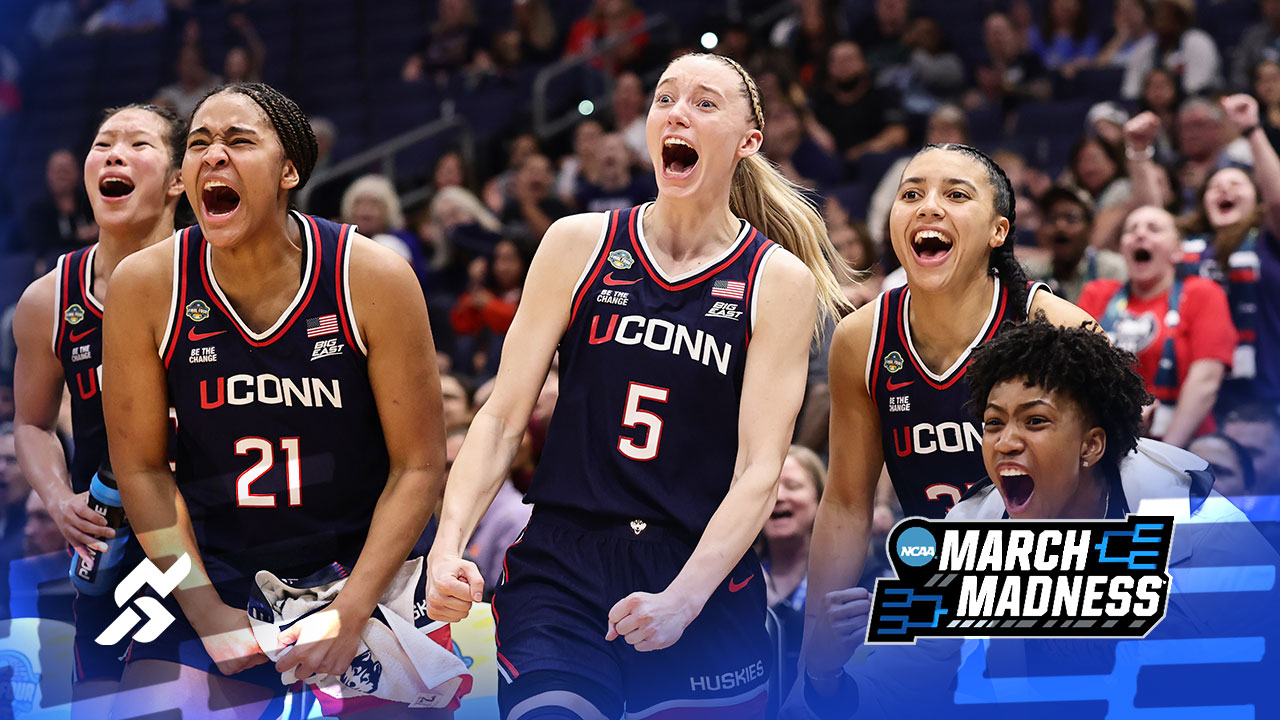
UConn is back on top, but not without a warning about the future for women’s college basketball.
The Huskies beat South Carolina 82-59 in the NCAA tournament title game Sunday in Tampa. It is UConn’s record 12th national title but first since 2016, ending a decade-long drought for head coach Geno Auriemma and a shorter spell for junior guard Paige Bueckers, considered by many to be among the best UConn players of all time.
The return to the sport’s apex, however, doesn’t mean that everything is rosy for Auriemma. UConn’s title drought was a product of the sport’s new-found parity, with programs like South Carolina, Notre Dame, Baylor and Stanford all cutting down the nets. Speaking to reporters earlier this week at the Final Four, the UConn coach was sanguine about whether that competitive balance will continue once schools can start sharing money directly with athletes.
“It will ruin parity,” Auriemma said on Thursday. “Right now there’s less parity happening every year in men’s basketball. People talk about the same schools in the Final Four seems like every year. And as the money now drives it, there’s going to be less people that have that kind of money. There’s going to be less of them that are going to want to give it to women’s basketball.”
Barring a major surprise following a hearing on the House vs. NCAA settlement on Monday, colleges will be able to share up to $20.5 million with athletes next season. Anything beyond that will need to be approved as “fair market value” by Deloitte, the NCAA’s official clearinghouse. Enforcement of those limits will be run by an LLC set up by the power conferences, though details on that are few and far between.
Not every school, of course, will have the $20.5 million to spread around. Schools in the Big Ten and SEC will, thanks to the football-heavy media contracts that fund a good chunk of their athletic endeavors. Others will try to make do with less. Many Big East schools, according to Yahoo! Sports, are planning to spend $5 million on basketball, with a few expecting to deploy upwards of $7 million. The fact that they don’t have big-time college football has emboldened some Big East leaders to anticipate actually spending more on basketball than their big-conference peers, but many others wonder whether the new structure will actually keep revenue sharing under the new limit.
“That’s where the rumors start to fly about circumventing the cap,” Kansas State athletic director Gene Taylor told Yahoo! Sports. “Are we going to go back under the table again?”
Auriemma was even more explicit.
“Don’t believe this $20.5 million salary cap,” he told reporters. “See, the thing is in the NBA, if you go over the salary cap, there’s a huge tax … You think anybody in their right mind [in college] is going to stick to 20.5? That might be what’s on the books, but that isn’t going to be the final number.”

UConn is not one of those schools that has a money-printing football team. Despite being in FBS, the Huskies are not a part of any football conference and are therefore left to fend for themselves for TV money. The Huskies sold $2.2 million in football tickets in 2023-24; SEC member South Carolina, by contrast, sold $19.7 million. The Huskies athletic department reported $10.7 million in media rights and NCAA/conference distributions; South Carolina reported $53.8 million in those categories. UConn is the only public FBS school that spends more on basketball than football, according to Sportico’s college finance database.
As that money imbalance increases, Auriemma anticipates something that looks more like MLB.
“Who is going to become the Dodgers and Yankees?” he said. “And how many of those are you going to have and how many other programs in women’s basketball are going to be Milwaukee and Kansas City? Because that’s where we’re headed.”

Auriemma was also outspoken this past week about how the NCAA structures the women’s tournament. It used to have four regionals, like the men’s event, but that shifted to two in 2023. Auriemma during the tournament called the change “misguided” and said it had “ruined the game.” After UConn beat UCLA in the semifinals, he reiterated that two regionals, regardless of where they are, limit the number of people who can come to games.
Speaking to reporters in Tampa, NCAA president Charlie Baker defended the policy while leaving the door open for change.
“The [women’s basketball] committee talks about this issue on a pretty regular basis,” Baker said, according to ESPN. “That’s the reason they made the decision to go to the two sites in the first place … If they believe there’s an option that would create the same fan and student-athlete experience, I’m sure they’ll take that under consideration.”
